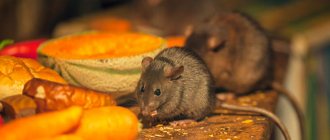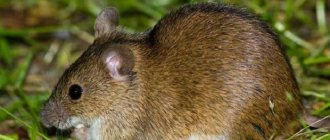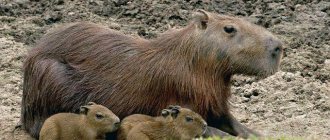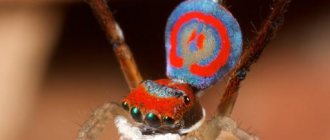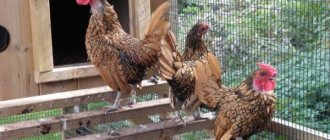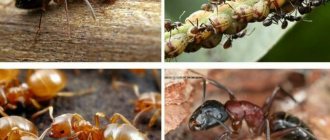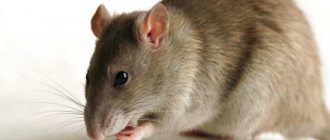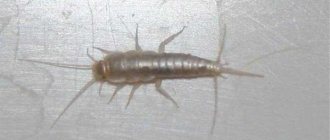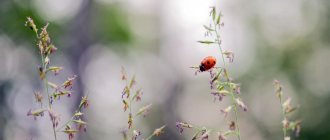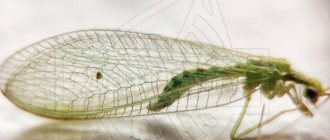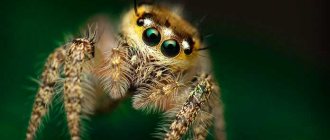Pasyuk
Pasyuk color is usually dark gray or gray-brown.
Sometimes it has yellow, red, orange shades. Gray and black types are the most common. Body length is from 8 to 30 cm, the tail is the same length or longer. Average weight up to 250 grams. Rodents have a terrestrial habitat. They dig holes or occupy other people's. They can live in basements and various ceilings. Rats live both individually and in colonies.
They are mostly omnivores. But different types have their own preferences. Some eat fruits, vegetables, and seeds. The rest feed on insects, mollusks, and small invertebrates.
People have been fighting them for many centuries in various ways. Laboratory experiments are carried out on rats. The lifespan of pests is up to 2.5 years. However, due to their fertility, the number is growing every day.
The animal moves quickly, reaching speeds of up to 10 km/h. They jump up to 2 m in height. They are not afraid of cold and heat. They can live at 20 degrees cold and 50 degrees hot. Not exposed to radioactive effects.
In apartment buildings they move through ventilation pipes. When falling from the 5th floor, they do not suffer serious injuries. The most important thing for them is food and water. During the day, the volume of water should be 35 ml. A rat will not survive more than 4 days without food.
Pasyuk rat.
Other breeds
Through the process of crossing different species, many different breeds were developed. Some of them are not officially recognized because they are considered abnormal.
- Rex. The fur of this species of rat is curly and stiff. It seems to be sticking out in different directions. These animals have short, curling whiskers.
- Double rex. This variety has a striking distinctive feature, as it is susceptible to molting. Because of this, areas of curly hair alternate with bald spots. When hair grows on bald areas, it begins to fall out on those that had vegetation. These rats are not officially recognized.
- The breed of long-haired rats is otherwise called satin. Such animals do not differ in size from standard rats, but their fur is slightly elongated and very shiny.
- Husky. This species resembles a dog breed of the same name. On the animal’s muzzle there is a white mask of the same shape as that of dogs of this breed. They have the amazing feature of changing the color of their coat throughout their lives (colored wool is eventually replaced by white hairs).
Husky breed - Curly rats resemble lambs in appearance. They have a velvety, shiny and curly coat. On their bellies it can be either regular or curly.
- Wavy. These animals have thick, soft, fluffy and wavy fur.
- Odd-eyed. This is the most unusual type of rodent. The eyes of its representatives have different colors.
Rats are smart, beautiful, flexible and plastic animals. They are loved and bred by many. These rodents have helped humanity many times. For example, with their help, many drugs have been developed that save human lives. However, children and many adults love them simply for what they are, because they are quite cute and friendly. Now you have become acquainted with all types and breeds of decorative rats. It's time to go buy a pet!
Great article 23
Black and gray rat
The black rat is called a roof rat, an attic rat, or a ship rat. Activity at night. This is a less aggressive species than gray rats. The second name is gray barn.
This is the largest and most vicious species. She is able to displace the black one. Distinguished by strength, cunning, audacity, dexterity.
In the wild, rodents live near water. They fight rats using various methods:
- biological - cats and dogs are assistants;
- physical - with the help of rat traps, traps, traps;
- chemical - poisonous drugs;
- ultrasonic
Who do you meet more often?
RatsMice
Long Ward-Jerboa
Photo: Syt55//Public Domain
The aptly named Longhaired Jerboa is a nocturnal mouse rodent found in the Palearctic ecozone of Mongolia and Western China. They are well known for their oversized ears, which makes it clear where their name comes from. Their ears are more than a third longer than their heads and have tufts of bristly hair.
Another important feature is the Long-Ware Jerboa's legs, which are especially large in comparison to their body to enable the animal to jump long distances as it hunts for its primary prey, which includes numerous species of flying insects. Its ears are used primarily for protection, as they allow the long-haired Jerbois to hear predators from a great distance. They will also likely help locate local prey nearby and repel their exact location.
Scientific name: Euchoreutes naso Type: rodent
Vole mouse
The habitat of voles and voles is the banks of rivers, ponds, and reservoirs. They also inhabit meadows, fields, vegetable gardens, and orchards. With the flood it begins to migrate to land. When the water subsides, they return back.
Body length varies between 13.5 - 21.5 cm, tail length from 6.3 to 12.8 cm. Weight - 80 - 180 g. It resembles a rat. The large and clumsy body is combined with fairly short legs. The animals feed on succulent shoots, tree bark, earthworms, and plants.
Animals are voracious. A flock of animals can destroy the crop. They can harm a tree by eating the bark at the base. Mice feed on grain crops and damage garden seedlings. They carry Omsk hemorrhagic fever and leptospirosis.
A special place is given to the fight against them. The use of poisons is inappropriate, as it can harm the plants. The use of ultrasonic repellers and traps is most effective. Cats help eliminate rodents in a small area.
Females and males have the same color and size. They are prone to living and constructing complex burrows. The burrows have separate nesting chambers and storage rooms. Water voles are a food source for minks, otters, foxes, stoats, ferrets, and birds of prey.
Field mice.
Signs of rodents. What you need to know about them
Rodents are hares, rats, mice, etc. There are more than 1,700 species of them. All wild species also belong to the category of rodent pests, but not all of them can be found on the site. The ones you find at the dacha will be medium in size (8-35 cm). All rodents are capable of causing serious damage to the crops on your site. If they start in the garden, it is easy to determine by the following signs:
- damaged (gnawed) bark on the trunk and shoots, branches, buds, roots;
- a network of holes in the ground, eating underground elements of bulbous plants;
- destruction of the crop during ripening and its reserves during storage.
Attention! Shrews and moles, which do not fall into the category of rodents, are also considered garden pests. They are insectivores and cause damage to garden crops by digging into the root system. On the other hand, along the paths of these pests, mice enter the area en masse and attack the crop.
Wood mouse
Body length ranges from 8 – 11.5 cm, tail length from 3 to 6 cm. Weight – 17 – 35 g. The color of the back is rusty-brown with a grayish-whitish belly. The tail is two-color.
Their habitat is forest and forest-steppe. They prefer to settle in deciduous and coniferous forests. Even swampy areas of forest-tundra are not alien to them. They are also able to climb mountains.
Activity is around the clock at any time of the year. The burrows are made shallow and short. They can hide in crevices of tree roots. They easily climb trees and bushes.
They feed on herbaceous plants, seeds, bark, shoots, moss, lichen, and invertebrates. In gardens and forests they cause harm and also transmit tick-borne typhus fever and leptospirosis. Mice are the main source of food for mustelids.
Forest mice.
Capybara
It is also called capybara. This is a herbivorous mammal, its name consists of 8 letters ( capybara ), and is often asked in crosswords and scanwords. Its body length is 1-1.35 m, height - 50-60 cm. Males can weigh from 34 to 63 kg, females - even more, from 36 to 65.5 kg. Externally, the capybara is somewhat similar to a guinea pig; it has an elongated body and hard fur.
It can be seen in Central and South America. Lives near water, rarely goes more than 1 thousand meters from it. They are active during the day, but can also become nocturnal.
They can swim and dive, feed on aquatic plants, grass and hay, and tubers. Capybaras are calm, friendly, and are often kept as pets.
4 1
Gray or common mouse
Gray mouse.
Body length – 8.5 – 12.3 cm, tail length – 2.8 – 4.5 cm. Weight – 14 g. Color gray. Sometimes with a brown or reddish tint. Settles in meadows and treeless areas. The burrows are from 10 to 70 cm deep. This is influenced by the time of year and the topography.
The diet consists of 88% green parts of plants, the rest comes from seeds and wild plants. In summer and spring, they consume asteraceae and cereals, and in winter, tree bark.
Feed intake is 70% of body weight per day. In the cellars they eat grain, root vegetables, cabbage, and potatoes. They carry leptospirosis, toxoplasmosis, pig erysipelas, and tularemia. Life expectancy is 8 to 9 months.
Pacarana
Another name for it is false pack . The pacarana looks like a guinea pig, but is a fairly large rodent. Her body length is from 73 to 79 cm, she weighs 10-15 kg.
This is a massive, heavy animal. The tail is about a third of the body in size. She has a wide head, on which there are round ears and unusually large eyes.
Pacarana is black or dark brown, has white spots, and has coarse and sparse fur. You can meet her in the forests of the Amazon. These are slow animals. Not much is known about their life.
Steppe pied
Until recently, this species was considered a dangerous pest. However, due to the small number of remaining individuals, they were included in the Red Book . Habitat: steppes, semi-deserts, forest-steppes. It can live in river valleys and lake basins, as well as on the slopes of ravines.
Activity is around the clock. Burrows at a depth of 30–90 cm. In winter, they can build a tunnel under the snow. The body is 8–12 cm long, the tail length is 7–9 mm. Life expectancy reaches 20 months, although in captivity some live up to 2 years.
The color is monochromatic. They feed on tubers, bulbs, seeds, bark of shrubs, and green parts of narrow-leaved cereals.
They themselves are prey for the fox and corsac. A fox can eat 100 animals within a month.
Steppe moth.
Djungarian hamster
This is a cute, active and inquisitive pet. The animals are distinguished by their fertility. Among the disadvantages, it is worth noting the short lifespan. They live up to 4 years.
They are nocturnal and do not require special care. They are fed morning and evening. You can use food for small rodents or prepare a mixture of oats, corn, peas, seeds, and nuts.
You can add carrots, zucchini, cucumber, greens, lettuce, apple, pear, and berries to your diet. Sometimes you can treat them to boiled chicken, low-fat cottage cheese, and unsalted lard.
It is forbidden to feed:
- potatoes;
- sausages and sausages;
- mushrooms;
- onions, garlic;
- cabbage;
- watermelon;
- citrus fruits;
- chocolate;
- cookies;
- honey;
- sugar;
- salt and spices.
The natural color is expressed in a gray-brown back, which has a pronounced black stripe and a light belly. In nurseries, varieties with pearl, tangerine, and sapphire colors are bred.
Hamsters love edible sticks and spikelets. To grind teeth, it is appropriate to use a mineral stone or a birch block. Animals are kept in cages or aquariums. Place it in a quiet place where there is no exposure to direct sunlight or drafts.
Djungarian hamsters.
Gray hamster
A small and short-tailed animal. Body length is 9.5 - 13 cm, tail length is from 2 to 3.5 cm. The color can be smoky gray, dark gray or brownish gray. Reddish-sandy individuals are rare. They store supplies in their burrows. The hole can only be in a dry place . The supply of seeds for the winter period reaches 1 kg. Activity is observed at night.
In nature, their diet consists of seeds and inflorescences of wild cereals. They do not refuse green shoots of plants. Larvae and land mollusks are a favorite delicacy. In this regard, insect larvae are included in the pet’s diet. Give food little by little, avoiding overeating. The water must be fresh.
This variety is used by scientific institutions in laboratory research.
Gray hamster.
Beavers
Capybaras, although very large, are found only in the Southern Hemisphere. But in the Northern Hemisphere, the largest rodent is the beaver. The animal reaches 1-1.3 meters in length and approximately 35 centimeters in height. His body is massive and stocky, his eyes and ears are small and not very expressive.
For swimming, the paws are equipped with membranes. During a dive, the ears and nostrils close tightly, and the eyes are covered with nictitating membranes. The tail is paddle-shaped - flat and widens towards the end. He serves as the steering wheel. When in danger, the rodent taps it hard on the water, scaring away enemies.
Beavers live near rivers and lakes. In places with steep and steep banks, animals dig deep holes with a lot of passages and labyrinths. If the coast is flat or the area is swampy, then the rodent builds a hut - a floating house made of silt and brushwood. There they live and store food.
The entrance to the house is always in the water, and a dam is built around it. It is a reliable protection against predators, and in winter it simplifies the process of searching for food. In construction, beavers have no equal. The dams are equipped with passages for rodents and a water drainage system. Their shape differs depending on the nature of the flow in the reservoir. The dams sometimes reach several hundred meters; one of the largest (850 meters) was found in the Canadian Wood Buffalo Park.
Beavers feed exclusively on plants. They prefer bark, grass, and acorns. Their hard teeth allow them to grind down trees. During the night, a rodent can knock down a tree with a diameter of 40-50 cm. Their activity begins at dusk and ends in the early morning. In winter, they do not hibernate, but they are in no hurry to leave their homes, eating reserves prepared in the fall.
Mouse-like hamster
Mouse-like hamster.
The mouse-like rodent can live in rock crevices in the wild. When jumping, it reaches 30 cm from the ground when it senses danger. Small groups gather in one nest, where they hide from the cold and predators.
The diet consists of seeds, flowers, leaves, animal feed, insects, and carrion. In captivity, they are able to reproduce at any time of the year, in nature from March to December. Life expectancy is more than 9 years at home, in the natural environment about 2 years.
Flying squirrels
Flying squirrels are a subfamily of squirrels. They inhabit the northern regions of Eurasia from the Scandinavian Peninsula to Chukotka, preferring deciduous and mixed forests. Their external outlines are similar to ordinary squirrels, with the exception of some features.
They are nocturnal, so their eyes are much larger. The head of flying squirrels is more rounded, and there are no fur tassels on the ears. On the sides of animals there is a leathery membrane connecting the hind and forelimbs. During jumps, they spread their limbs to the sides, the membrane is stretched, allowing them to glide in the air. So the rodent makes jumps and flights of 50-60 meters.
They are hunted by owls, martens, sables and other predators. The flying squirrels themselves eat plant foods (buds, mushrooms, berries), as well as bird eggs and small chicks. They do not hibernate, but remain indoors during cold weather. Rodents make their homes in tree hollows at high altitudes. When a hollow is found, the squirrel puts moss, leaves, and grass into it, making a round nest. Sometimes she uses abandoned nests of birds or other squirrels.
The flying squirrel is difficult to keep at home, as it needs a lot of space. But in captivity she lives for about 10-13 years, which is twice as long as in natural conditions.
